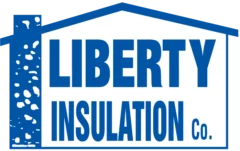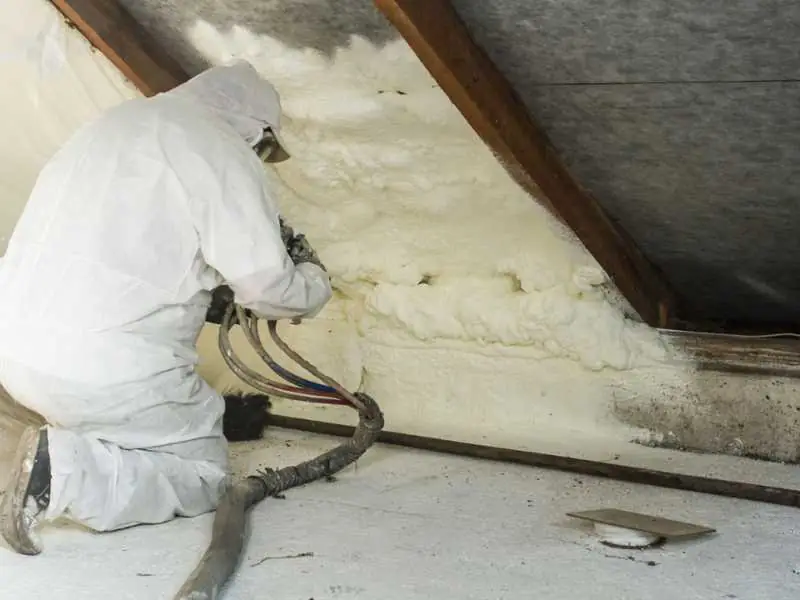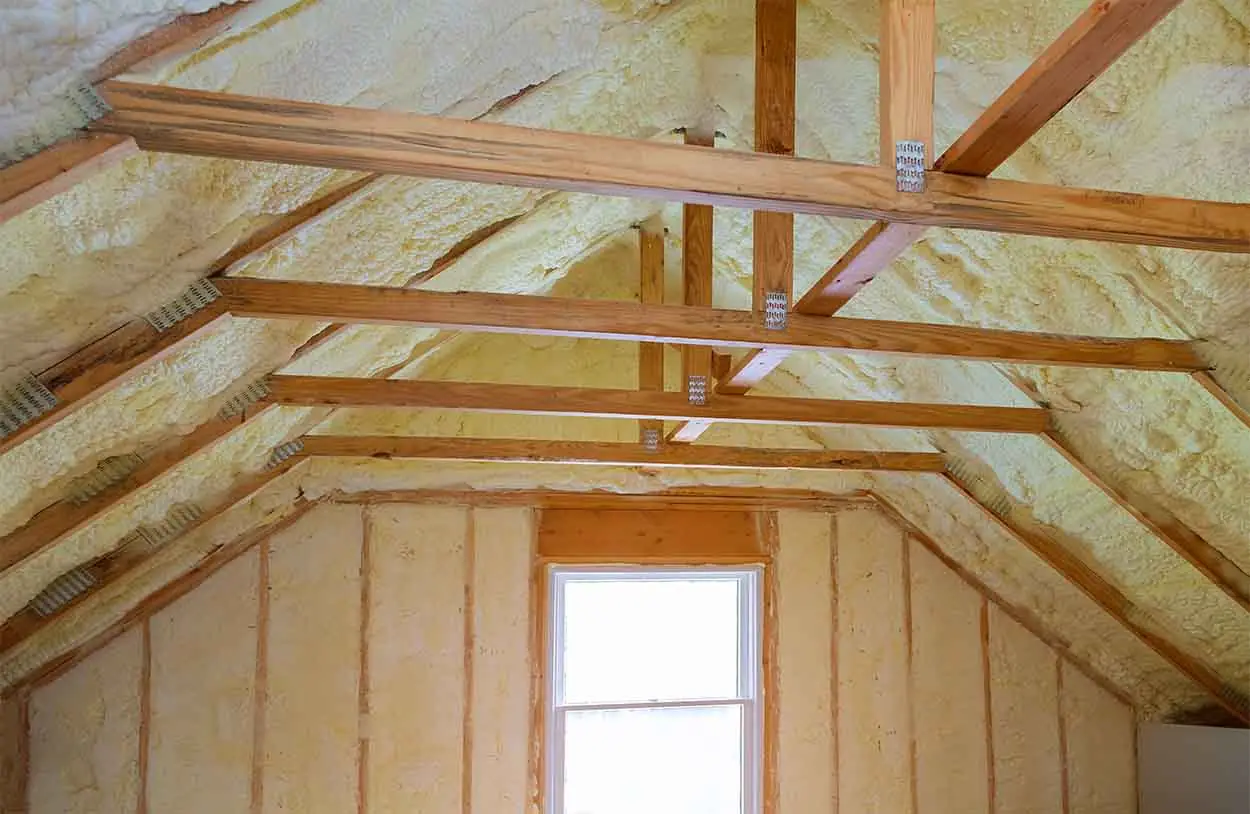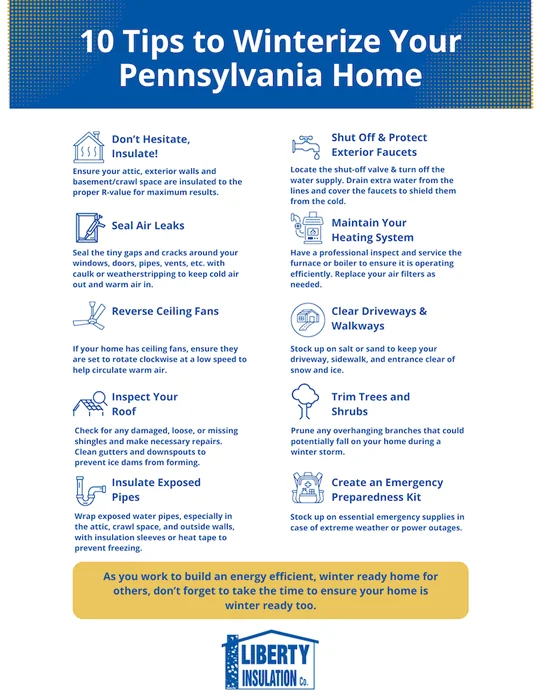Why Insulation Matters in Pennsylvania
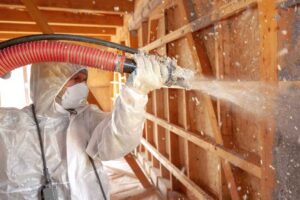
Pennsylvania winters bring freezing temperatures, snow, and icy winds. The average Pennsylvania household uses more than 10,000 kWh of electricity annually and spends over $2,000 a year on energy bills, with nearly half going toward heating costs. Without proper insulation, much of that heat escapes, forcing your heating system to work overtime.
Heat flows naturally from warm to cold areas through conduction, convection, and radiation (DOE). This means warm indoor air will always try to move toward the cold outdoors until temperatures equalize. The result? Higher energy bills and uncomfortable drafts.
The Pennsylvania Department of Environmental Protection notes that “the most cost-effective way to save energy in the home is to air seal and insulate” (source). With the right insulation, you can reduce heat loss, improve energy efficiency, and create a home that stays warm even during the coldest months.
Choosing the Right Insulation for Pennsylvania Homes
When selecting insulation, the most important factor is R-value, which measures resistance to heat flow. Higher R-values provide greater insulating power. In Pennsylvania’s cold climate, builders and homeowners should focus on materials that offer high R-values and durability.
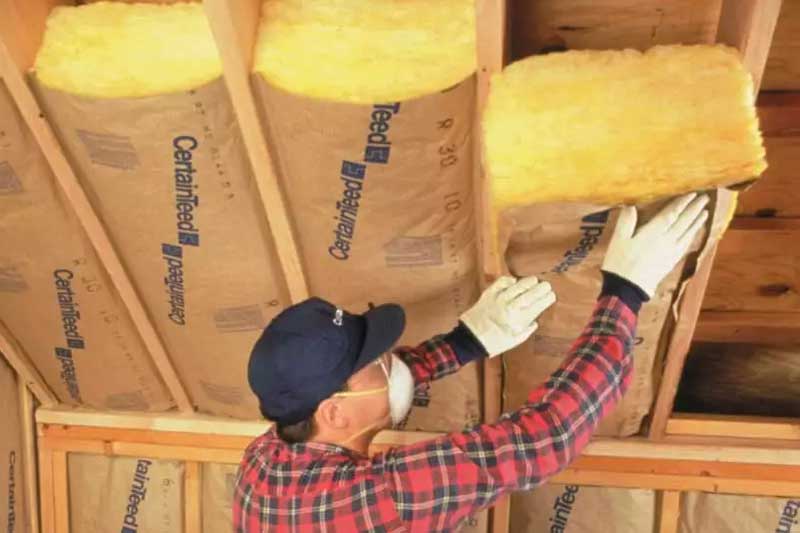
Popular insulation materials include:
Fiberglass Insulation
- Affordable, versatile, and widely available
- Contains 40–60% recycled glass content
- Available as batts or blown-in loose fill
- Effective for attics, walls, and crawl spaces
Cellulose Insulation
- Made from recycled paper products, treated for fire resistance
- Superior soundproofing and air sealing
- Excellent for wall cavities and attics
Spray Foam Insulation
- Highest R-value per inch
- Expands to create an airtight seal, blocking drafts and moisture
- Perfect for irregular spaces, rim joists, and around plumbing penetrations
- Requires professional installation
Mineral Wool Insulation
- Contains up to 75% recycled content
- Naturally fire resistant and moisture repellent
- Available in batts, rolls, or loose-fill
Rigid Foam Board Insulation
- R-4 to R-6 per inch—double the insulating value of standard batts
- Ideal for basement walls, crawl spaces, and under siding
Key Areas to Insulate in a Pennsylvania Home
Even the best insulation won’t work if it’s installed in the wrong places. To maximize comfort and efficiency, focus on these areas:
Attic & Roof
- Responsible for up to 25% of a home’s heat loss
- Pennsylvania building code requires R-49 minimum attic insulation; experts recommend up to R-60
- Don’t forget attic hatches and access stairs, which are major sources of air leaks
Walls (Exterior & Garage)
- Code requires R-20 in wood-frame walls
- Insulate walls separating conditioned spaces from garages, basements, or unheated areas
Basements and Crawl Spaces
- Basement walls should meet R-10 to R-15 continuous or R-19 cavity insulation requirements
- Crawl spaces benefit from rigid foam board or spray foam to block cold air and moisture
Windows and Doors
- Even with insulation, drafts around openings waste energy
- Weather-strip and caulk gaps to prevent cold air infiltration
Professional Installation vs. DIY
While some homeowners may consider tackling insulation projects themselves, professional installation ensures compliance with Pennsylvania’s energy code requirements and guarantees that insulation materials achieve their full R-value. Experts bring:
- Knowledge of code compliance and climate zone requirements
- Specialized equipment for spray foam and blown-in applications
- Proper sealing techniques to prevent gaps and thermal bridges
- Efficiency and safety protections
DIY installation can be effective for small projects, like adding batt insulation in accessible areas, but professional services are best for whole-home upgrades.
Extra Tips to Winterize Your Pennsylvania Home
Insulation is the foundation of winter comfort, but it isn’t the only step. Combine insulation with these strategies to save even more:
- Insulate your pipes to reduce the risk of frozen or burst pipes.
- Insulate your water heater or install a high-efficiency model.
- Seal air leaks around electrical outlets, chimneys, and recessed lighting.
- Install insulated curtains or window coverings to block cold drafts.
- Check your heating system to make sure it’s running efficiently before winter sets in.
Stay Warm and Save Money This Winter
Investing in insulation is one of the smartest moves for homeowners and builders in Pennsylvania. Properly insulated homes stay warm, reduce energy waste, and deliver long-term savings.
At Liberty Insulation, we specialize in insulation for new construction, retrofits, and commercial projects across Pennsylvania. Whether you’re a builder looking to meet code requirements or a homeowner aiming for lower energy bills, our experts can help you choose the best insulation materials and ensure professional installation.
Contact Liberty Insulation today to schedule a consultation and get your home winter-ready.
References:
“Energy Saver 101: Everything You Need to Know about Home Insulation.” U.S. Department of Energy, https://www.energy.gov/energysaver/weatherize/insulation.
“Insulation.” U.S. Department of Energy, https://www.energy.gov/energysaver/insulation.
“Where to Insulate in a Home.” U.S. Department of Energy, https://www.energy.gov/energysaver/where-insulate-home.
“Types of Insulation.” U.S. Department of Energy, https://www.energy.gov/energysaver/types-insulation.
“Building America Climate Zone Map.” U.S. Department of Energy – Building America Program, https://basc.pnnl.gov/images/building-america-climate-zone-map.
“IECC Climate Zone Map: Pennsylvania.” U.S. Department of Energy – Energy Codes, https://www.energycodes.gov/profiles/pennsylvania.
“Residential Energy Code Compliance.” Pennsylvania Department of Environmental Protection, https://www.dep.pa.gov/Business/Energy/OfficeofPollutionPrevention/Pages/Energy-Code.aspx.
“Energy Efficient Home Heating.” Pennsylvania Public Utility Commission, https://www.puc.pa.gov/General/consumer_ed/Energy_Efficiency_Tips.aspx.
“How to Winterize Your Home.” Pennsylvania Department of Environmental Protection, https://www.dep.pa.gov/Citizens/EnvironmentalEducation/Pages/Winter-Home-Tips.aspx.
“Air Sealing and Insulating: Where to Begin.” Pennsylvania Department of Environmental Protection, https://www.dep.pa.gov/Pages/air-sealing-insulation.aspx

